How to Plant Carrots
Carrot is loved and popular in the vegetable world and makes a great addition to foods since it can cook as raw or steamed. Adding it to the salads makes them look good and tastier. Moreover, the sweetness inside makes it even more delicious for certain recipes.
Planting and growing your carrot is a great feeling but may not be easy. Good things take effort, right? They are known for their difficulty in growing. But don’t worry, this won’t be a problem when you provide suitable materials from the beginning.
So, if you decide to grow your carrot, here is a great guide! All you need is to find the best way to plant carrots according to your garden, place, etc.
Choosing and Preparing the Soil
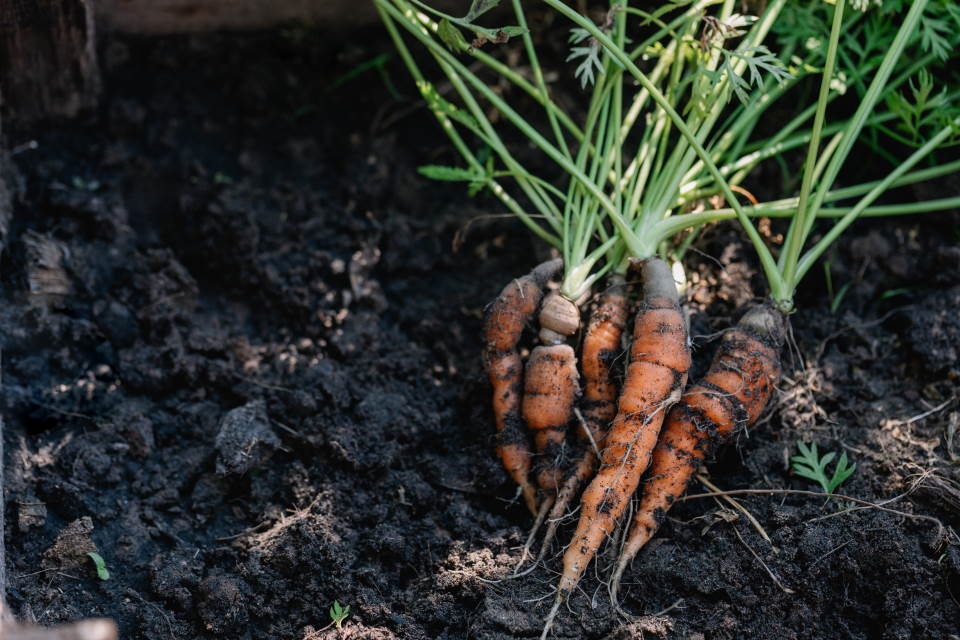
Soil is the life source of the carrots, so you should choose and prepare it meticulously. They don’t like most types of soil and are selective.
- The soil should be loose and clean from other materials like rocks and sticks to drain the water directly. Check the place before putting it.
- Loamy and sandy soils are preferable.
- pH should be between 6.2 and 6.8. You can use a test to find your soil’s pH.
- To improve nutrients in the soil, you can use materials specifically designed for this purpose.
- Fertilizing by using phosphorus would thrive the crops, a great addition to the soil.
Carrot Types
There are so many different types of carrots in the world. All of them have different growing, pruning, and harvesting style. So, finding the right type is essential.
So, let’s take a look at them:
- Imperator: These are the most popular ones. You can see them in bazaars and supermarkets; their thin and tall shapes can be recognized. They taste so sweet, too.
- Little Fingers: These are the ones you see selling as “baby carrots.” Even though they are small, they taste sweet, like imperator, and are excellent for growing in a pot or limited space.
- Purple: Unlike traditional ones, these are purple and antioxidant anthocyanin-rich. Sour and little spicy flavor make them the best match for season salads.
These are the most known ones. You can find more in random seed and the botanic store, don’t be surprised! If you can’t decide, rainbow mix seeds would work!
Where Are the Seeds in Carrots?
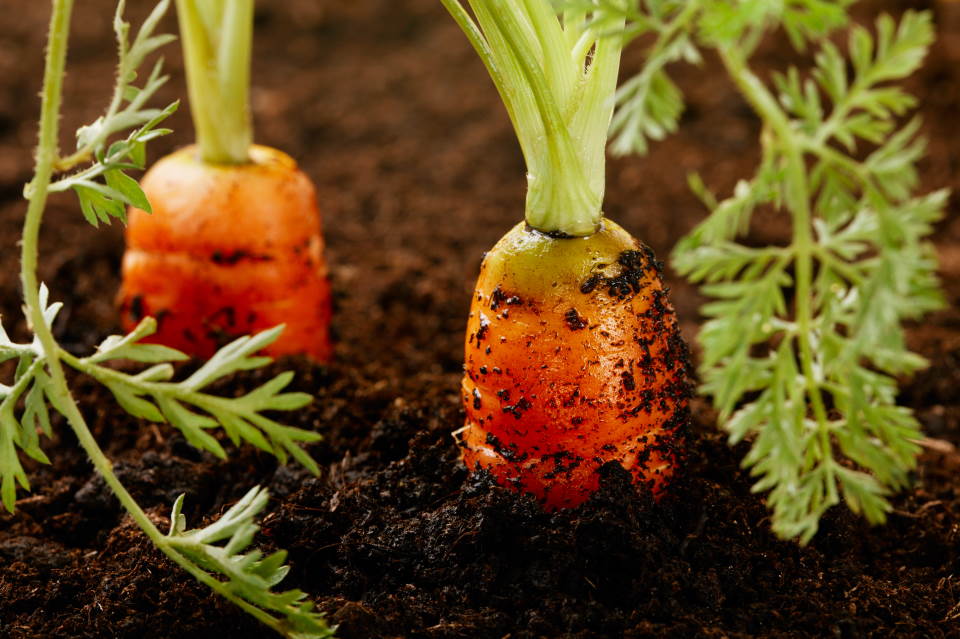
If you want to grow carrots from the seeds, the first thing you would look for is the seeds. Some botanists claim that they don’t have seeds but have dry fruits. Some claims that they don’t even have seeds. Therefore, this is a complex situation and can be confusing, especially if you’re new to gardening.
Seeds of the carrot do exist, and you can find them in the flower cluster of this vegetable. They are white during the blossom and turn brown when they start to dry in the late summer.
To obtain flower clusters with seeds, these need to be done:
- Trim off the carrots that you grew, and plant again with 2-3 centimeters (0.78 – 1.18 inches) with considering leafstalk.
- After blossoming in the spring, collect them and leave them to dry.
- After drying, you can see the seeds after shaking the flowers.
How to Plant Carrot Seeds?
Planting the carrot seeds is easier than you think. But note to be cautious while planting since they are tiny and can fly easily.

Follow these steps. They are the best way to plant carrots:
- Firstly, prepare the soil. Fertile soil is suitable. It should be without sticks and rocks.
- Heating is important for root health. Heat around 20 Celsius (68 Fahrenheit) is fine.
- You can dig little holes by using your index finger. For example, 0.63 centimeters (1/4 inches) depth is good.
- Carrot doesn’t look for large space so that you can plant seeds 2.54 centimeters (1 inch) apart.
- You can scatter seeds if you have a large area.
- After planting, cover the seed with soil. Make sure that seed and soil are in touch.
- Then, water. Moisten the soil, but giving too much water causes rotten roots. To not move seeds, be gentle during watering.
How Far Apart to Plant Carrots?
Carrot is a vegetable that does not look for large spaces so that you can plant seeds 2.55 centimeters (1 inch) apart. It’s fine for early growth, but later, you must plant thin carrots 5-7 centimeters (2-3 inches) apart.
You don’t need any special materials to measure this distance. But some types of carrots can grow differently than others. You should check the type before planting them to prevent any problems. Distance is significant for healthy root development and growth.
How Deep to Plant Carrot Seeds?
Like distance, depth is significant for healthy root development and growth. Using your index finger, plant the seeds after digging a hole around 0.63 centimeters (1/4 inches). This is good for the first planting of the seeds. Make sure that the places you plant the seeds are around 30 centimeters (12 inches) or more. If your area is limited, consider changing to the other types.
Cover the seeds after planting and ensure they are in the soil fully. Carrots don’t like their roots disturbed by another plant, so you should consider the depth between them and other vegetables before planting.
When to Plant Carrots?
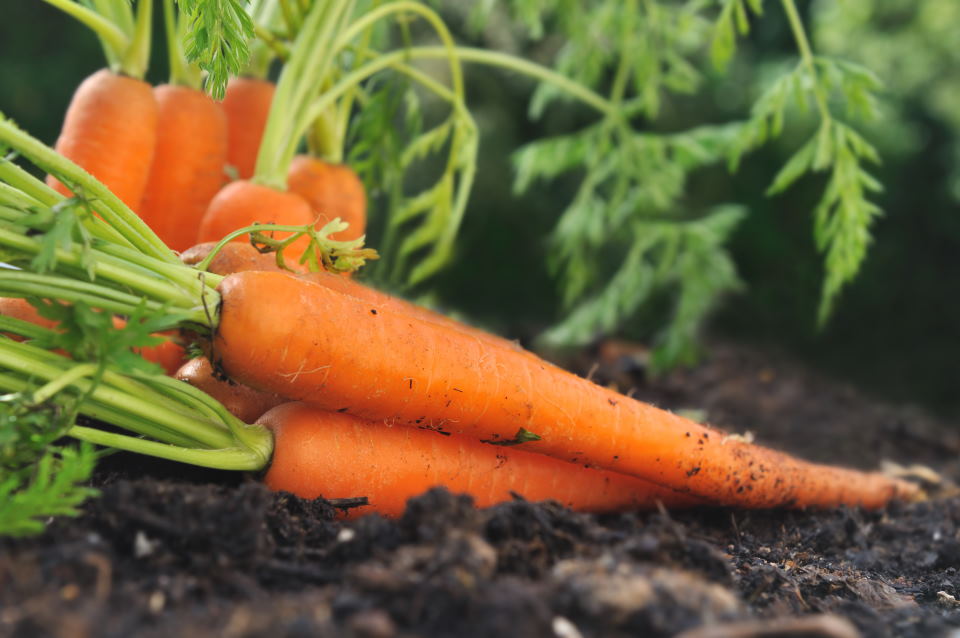
Carrot likes cold weather, cool and short days. In general, February – April are good. But planting time can change from region to region and the type. Weather affects the temperature of the soil, so you need to consider it.
After germination, the carrot becomes a cold-resistant plant. But note that this can cause differences in the color between crops. Even though it likes cold weather, it grows well in full sunlight. Late spring would be good because this season provides full – partial sunlight and cold weather, especially at night. Moreover, it also helps to sustain the dryness of the soil.
Can You Plant Carrots in the Fall?
As mentioned above, planting time can change from region to region. If the place of your residence is in hardiness zone 8, yes, you can plant carrots in the fall. Temperatures in the hardiness zone 8 are between -12 to -7 C (10-20 F).
Like in the late spring, fall provides cold weather but not full sun, only a partial and limited. Still, you can harvest in the next spring, but harvest time can differ due to the lack of sunlight during the growing.
Don’t forget to check the temperature of the soil when you plant carrots in the fall. Sometimes, sudden heat changes during the fall can affect the plant. And be careful while watering because, in the fall, water evaporates slowly. Pooling around the root can cause rot.
Planting Carrots in the Summer?
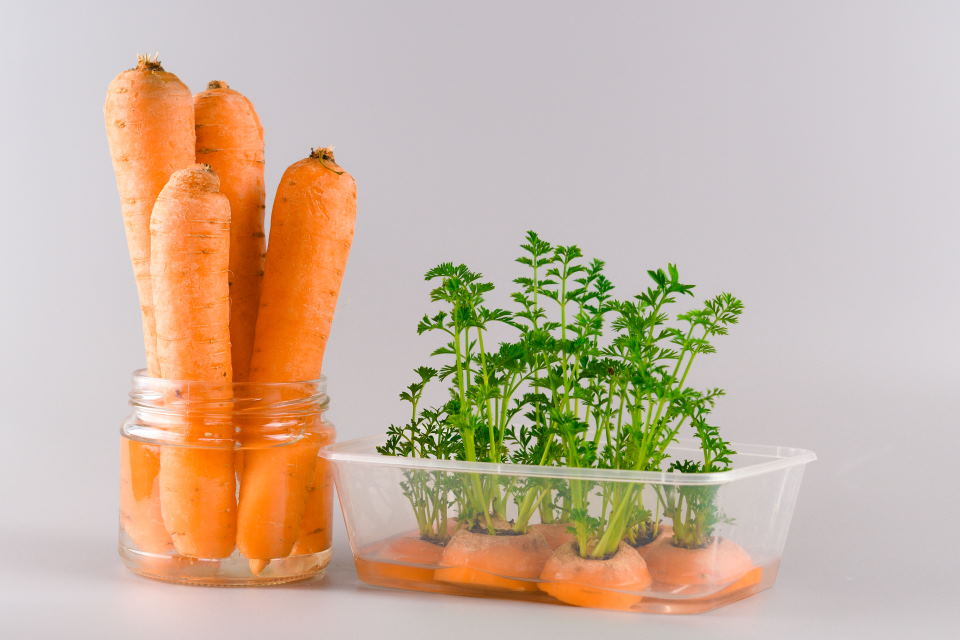
Carrot like cold weather, but with a little effort, it’s possible to plant in the summer too. If you’re living in a warm climate, don’t worry – you can grow carrots too. Full sunlight would be helpful for fast-growing. June and July are suitable for summer planting.
But here is the problem: carrots planted in the summer would likely taste bitter. This can affect the food taste or the thing that you would use summer carrots.
If you like sweetness, it can be a problem. To prevent this problem, do these:
- Plant the seeds deeply.
- Check the temperature of the soil often and try to keep it cool.
- Creating a weekly watering schedule would be good for cooling.
If these are not working, try to find carrot types that like summer.
What Is the Best Time of Year to Plant Carrots?
The best time of year to plant carrots is in spring. The weather is still slightly cold in March and April, but there’s also more sunlight.
You can consider falls, too. In September and October, the weather is getting colder, but the sunlight is fading, but enough to early stages of growth. 12-23 C (55-75 F) is great.
But when you compare the conditions, spring is better than fall because it provides cool weather and full sunlight. But it doesn’t mean you can’t plant carrots in the fall because of the sunlight.
If you aim to harvest in certain seasons, consider 3 months of growing time and do planting according to this.
How to Thin Out Carrots?
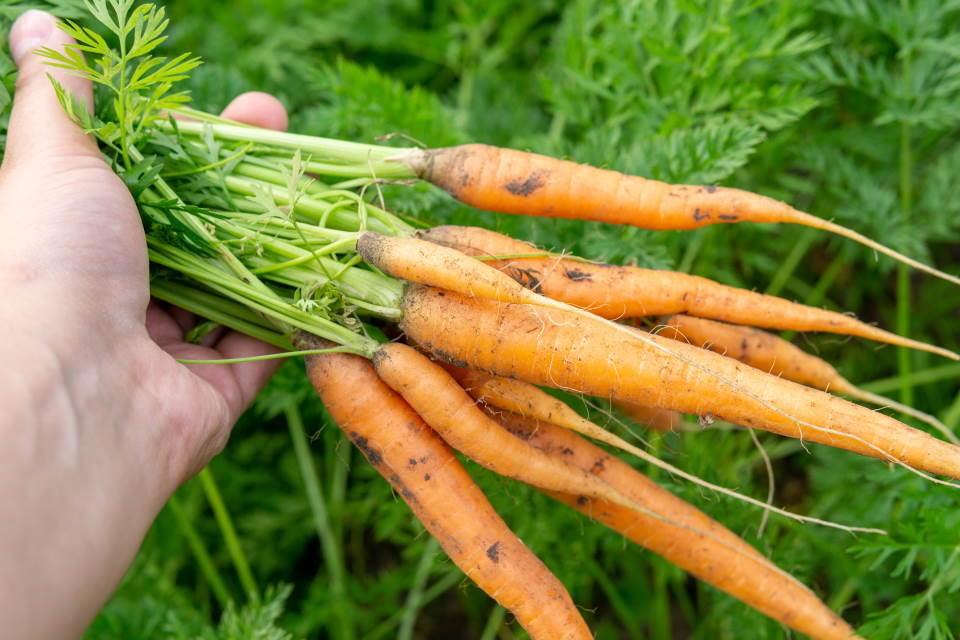
Even though some botanists say thinning carrots is attracting pests, it still needs to be done to create more space. Besides, thinning helps them to be more nutrients.
When your place is small, it’s necessary to do thin. But you need to be quick not to attract pests immediately. You don’t need to cover your plant after thinning them out.
- Start with watering. Water will soften the roots and will give you easy access.
- Hold the seedling, and gently pull by using your hand. Even though water would soften the roots, they are still fragile.
- Pulling 2-3 centimeters (0.78 – 1.18 inches) is fine.
After three weeks, you need to do thinning carrots out again. Don’t wait long; thinning would be difficult if you do.
- After three weeks, give some water and hold the seedling gently.
- Pulling 4-6 centimeters (1.57 – 2.36 inches) is fine.
Watering
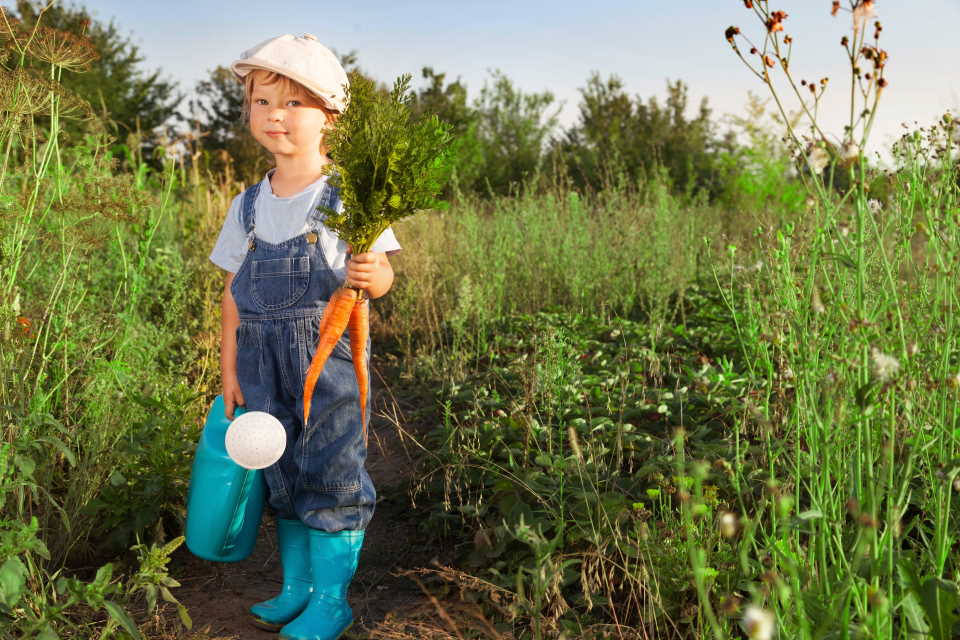
Carrots don’t require daily watering. You should give water every three days. 3.8 liters (1 gallon) would work, and it should be soaked 10 centimeters (4 inches).
If you plant in summer, give water when you see the soil surface is too dry. Carrots need moisture to grow, and dryness causes a bitter taste. Don’t forget that the soil should be clean to soak the water effortlessly. And when you water the heads accidentally, don’t panic. This won’t cause any harm to them.
They can be easily overwatered. To avoid this, please follow the instructions above. Because waterlogging causes roots to be rotten, and a lack of oxygen will kill the roots eventually. If you’re living in a rainy area, decreasing the watering time would be helpful to avoid waterlogging.
Light Requirements
Carrots like full and direct sunlight. This may be surprising because they grow underground but still need to take sunlight to develop and produce sweetness. Receiving sunlight 6-8 hours daily would be good for their healthy development.
They can tolerate partial sunlight too, which will cause slow development. When they are planted in winter, you need to use fertilizers to provide nutrients to the soil.
But please be careful about the place, because too much sunlight would dry the soil and affect your regular watering schedule.
Can You Plant Carrots with Tomatoes?
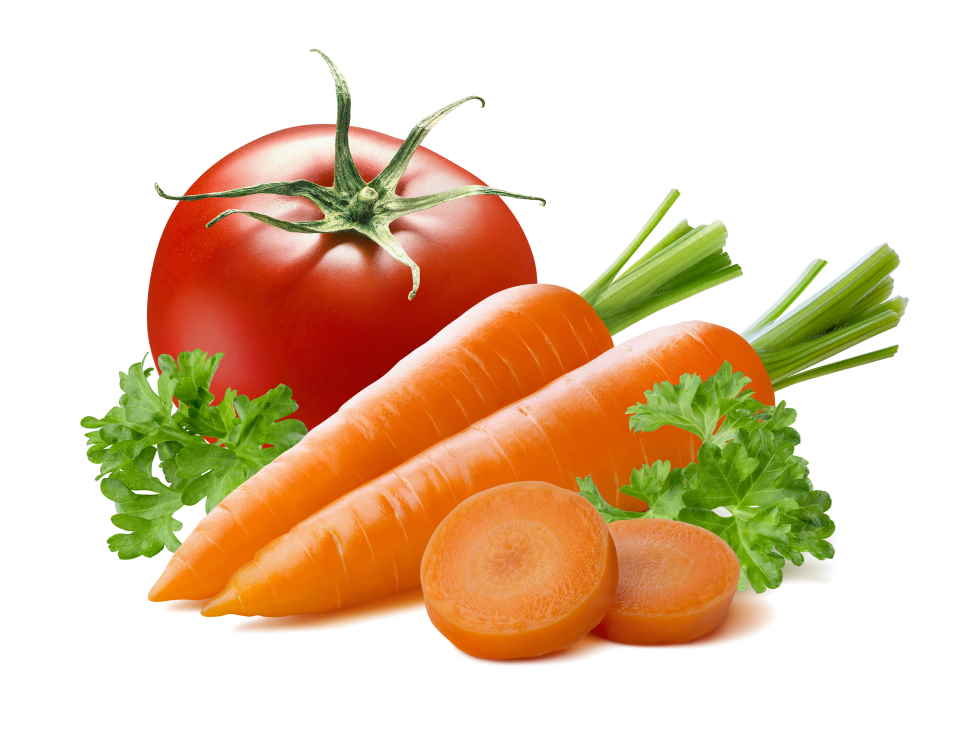
Yes, you can plant carrots with tomatoes, and these two are called sibling plants sometimes. You can think of them as if they are making a mutual and equal exchange because tomatoes will provide shade and protection from the pests, while carrots will open a road for more air and water for tomatoes’ roots.
To avoid any space problems, the best way to plant carrots is to plant them at a distance. 30 centimeters (12 inches) is fine for both of them. However, planting close can cause problems in the root, and during the harvest, they can cause harm to each other. Just be careful.
Companion Planting for Carrots?
Plants can affect each other positively or negatively. Therefore, finding companion plants for your carrots would be a great addition to your garden and your plant’s quality; hit two birds with one stone. Most of them can prevent any pest invasion.
Here is the list of the companion plants for carrots:
- Leeks: They can deter carrot flies and some other pests. It would be good for your carrots’ root health.
- Onions: Like leeks, onions can deter carrot flies and other pests. Planting leek and onion together with your carrots would be excellent for preventing pests.
- Chives: Chives can deter pests and make your carrots tastier.
- Radishes: During the sprouting, radishes heat the soil. Therefore, they help carrots to sustain certain heat of the soil for growing.
- Beans and Peas: They help make the soil more nutrient-rich, a good point for growing healthier carrots.
Non-Companion Plants for Carrots
Root vegetables are not good companions for carrots because they need big space for roots. Also, they need to take more nutrients from the soil, which will decrease the crops’ quality. Moreover, some vegetables can attract pests easily.
Here is the list of non-companion plants for carrots:
- Dills: Even though dill is a good companion for other plants, carrot is not one of them. Because dill can the keep down growth.
- Fennels: Fennels require huge space to grow and attract pests more when compared to other plants. They don’t like a companion and cause harm to others.
- Parsnips: Like fennels, parsnips require huge space to grow and can keep down the growth of the carrots like dills. But if you want them to be in your garden, you can plant them separately.
- Potatoes: They’re root plants that require huge space and nutrient-rich soil.
Can I Grow Carrots in a Pot?
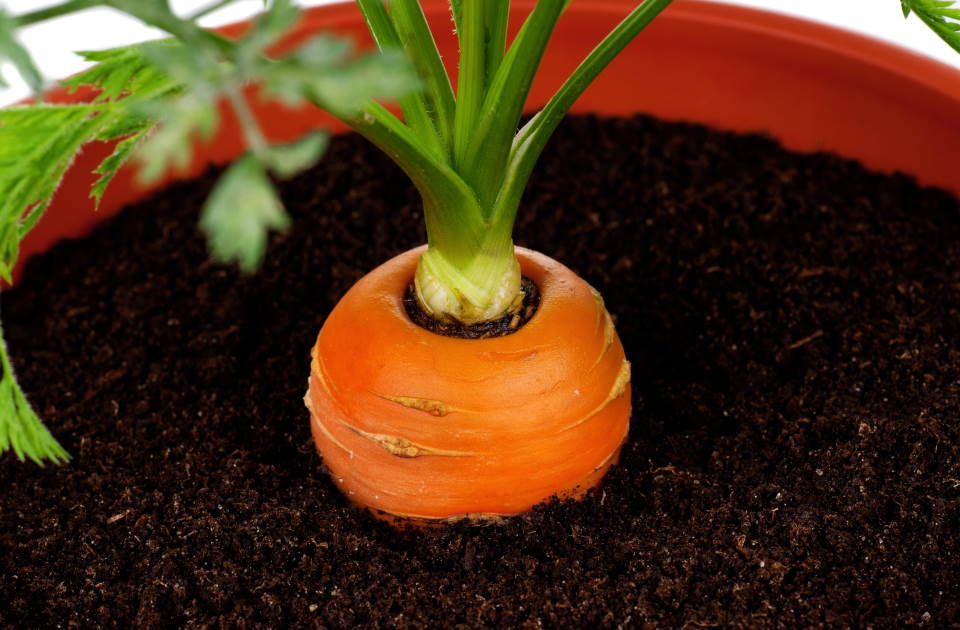
You can grow carrots in a pot when you provide suitable material for successful and healthy growth. First of all, you need to choose a pot. Carrots can grow in all pots, but deep ones are the best.
Here is a little list of materials:
- Pot, deep ones like 30 centimeters (1 foot) are fine.
- Glass dish or plate if you are not planting from the seeds.
- Knife, sharp ones are fine.
- Nutrient-rich soil
- And lastly, carrots that you choose to grow, or the seeds.
How to Grow Carrots in a Pot?
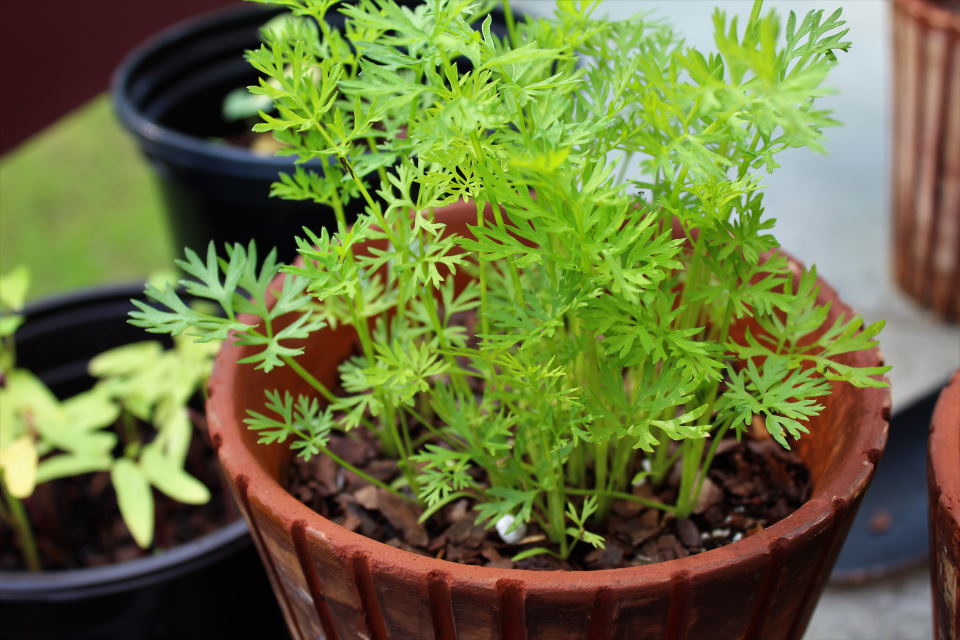
After collecting materials, all you need is to follow these steps:
- Take the carrots, and cut their top side. Cutting 3 centimeters (1 inch) would work.
- If you see the leaves on top of them, you can clean them but avoid cutting the leaves.
- Now your carrots are ready.
After cutting them, don’t waste the rest. They are still edible.
- Put the carrot heads you have cut in a glass dish or plate.
- Add clean water but not too much. You can decide the amount by looking at the size of the heads.
- Put the glass dish or plate in a place that receives partial sunlight.
- Change the water every day.
You can plant the pieces after 1.5 weeks. If you’re planting from the seeds, follow these steps:
- Dig a place using your index finger, 0.63 centimeters (1/4 inches).
- Place the seed, and cover with soil and water immediately.
Harvesting
Harvesting time depends on the type of carrot, but generally, it is between 60-80 days. But if you don’t want to keep the list of the days, you can decide when to harvest by looking at the vegetable. If the heads are popping out from the soil, they’re ready! You can wait for a little more if you want them to be big.
You can harvest them in the early morning when the day’s heat has not started. This is important if you want to store them, but if you want to use them immediately, harvesting time doesn’t matter.
You should be careful while harvesting; don’t pull them! Otherwise, you would harm the roots. Instead, you can dig a hole, use knife or garden scissors.
Common Diseases and Pests
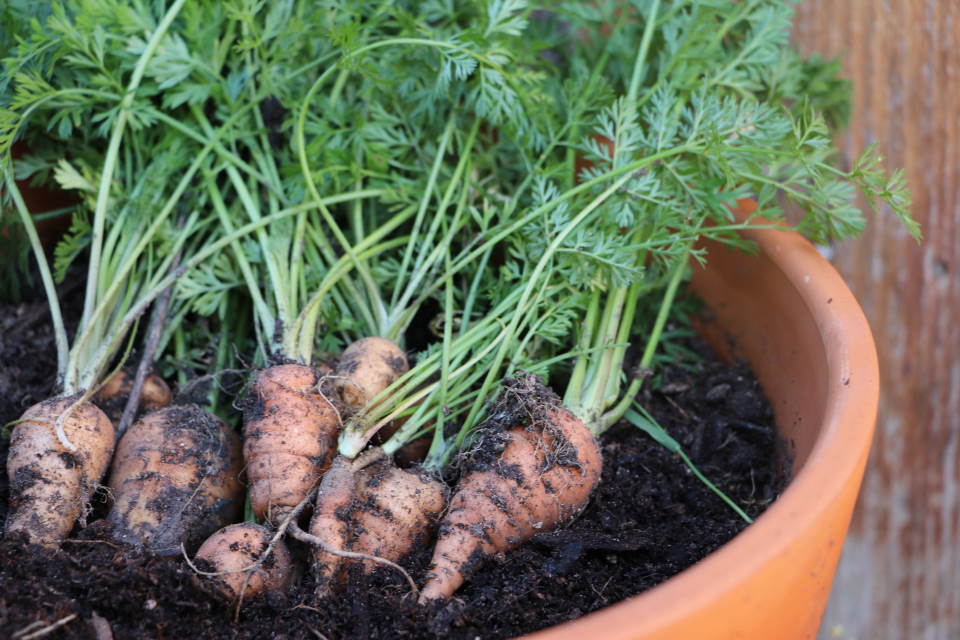
Diseases and pests are the enemies of the carrots and mostly cause them to wither and die. Archenemy of this plant is the carrot rust fly that leaves eggs on the top of the plant and eats the carrot inside. Weevil does the same to plants.
Both leave a dark black stain and can be understood by these marks. Root-knot nematodes also harm the roots and even cause death, but high levels of the sun can kill these pests. To protect your plants from them and other animals like rabbits, deer, etc., you can cover them with garden fabric.
Fungal diseases like cottony rot and Alternaria leaf blight are hard to cope with and cause irreversible damage.
Uses of Carrots
You can use them in so many places! They have benefits not only on your garden but also on your health! They include vitamins, and the urban legend about eyesight is not completely true but helps for better sight. Also, dietary fiber and antioxidants, especially in the purple carrot, help heart health.
Moreover, they are a huge part of the kitchen! It can be used to make delicious salads, snacks, cakes, soups, stews, etc. They have a unique flavor that gives the taste to the foods. Growing and collecting rainbow mixed ones will look aesthetic on food, especially on the salads.
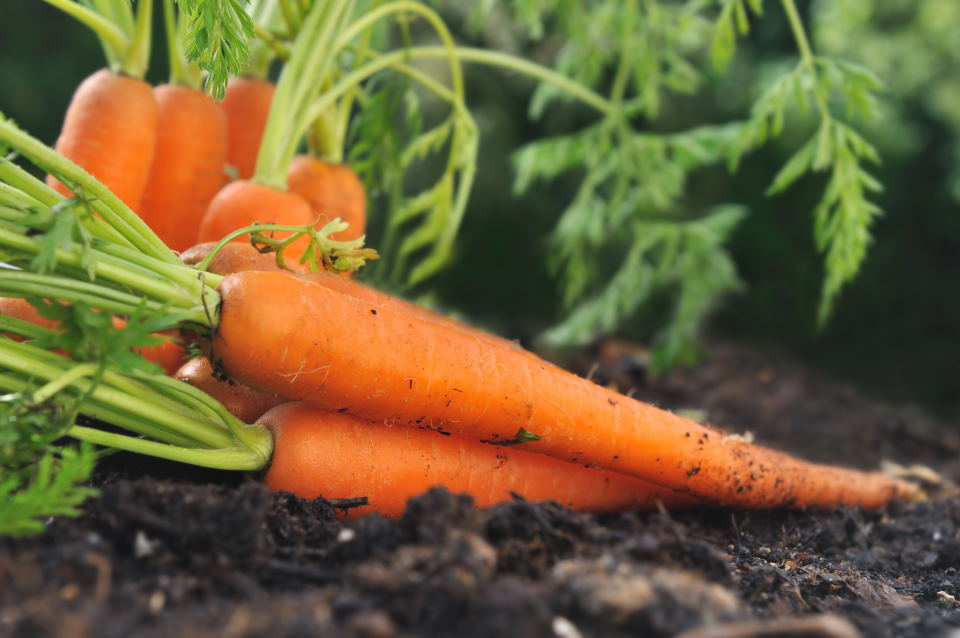
Sharing with your loved ones and neighbors would be lovely if you harvest so much of them and don’t know what to do. Then, they will always remember your delicious crops.
When your harvest becomes huge, you can even consider selling. Who would say no to organic vegetables?
Conclusion
In conclusion, planting carrots may look difficult, but it’s worth waiting until harvest time. You need to follow certain steps to obtain healthy carrots. Having two options to plant is good. Choosing the suitable method for your garden or pot is up to you. You will get the delicious carrot in the end regardless of the method.
Planting with companion vegetables would benefit not only the quality of crops but also the soil. So observe them while growing and harvesting when the time comes. By doing it, you will provide benefits not only for your health but also for the kitchen.
If your harvest becomes huge, selling them would benefit your budget. But it’s also okay to grow them in pots and use them for yourself and your family. Harvesting the vegetable you have grown is a great feeling, especially when you are a beginner.
You may also be interested in:
Birch Trees: Plant, Grow, and Care
